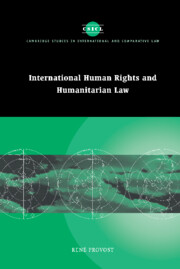Book contents
- Frontmatter
- Contents
- Acknowledgments
- Table of cases
- Table of treaties
- Table of other international instruments
- Introduction
- PART I Normative frameworks
- PART II Reciprocity
- PART III Application: law and facts
- Introduction
- 6 Areas of legal indeterminacy
- 7 Legal effect of characterisation
- Conclusion to Part III
- General conclusion
- Bibliography
- Index
- CAMBRIDGE STUDIES IN INTERNATIONAL AND COMPARATIVE LAW
Introduction
Published online by Cambridge University Press: 07 September 2009
- Frontmatter
- Contents
- Acknowledgments
- Table of cases
- Table of treaties
- Table of other international instruments
- Introduction
- PART I Normative frameworks
- PART II Reciprocity
- PART III Application: law and facts
- Introduction
- 6 Areas of legal indeterminacy
- 7 Legal effect of characterisation
- Conclusion to Part III
- General conclusion
- Bibliography
- Index
- CAMBRIDGE STUDIES IN INTERNATIONAL AND COMPARATIVE LAW
Summary
In what later became a standard defence tactic, the accused in the Tadić case before the ICTY argued that, at the time of the alleged war crimes, there was no armed conflict or that the conflict was of internal rather than international character. The attractiveness of such a defence lies in its devastating effect on the prosecution, challenging the very applicability of rules which are said to have been violated by the accused. Of necessity, then, one of the Tribunal's first and most difficult tasks has been to characterise the various phases of the confrontations in that region as international or internal armed conflicts or as mere internal disturbances. In Bosnia-Herzegovina, for example, this involves determining inter alia when Bosnia became an independent state, the nature and duration of involvement in the conflict on the part of Croatia and the Federal Republic of Yugoslavia (Serbia and Montenegro), the intensity of hostilities between the government and Bosnian Serb and Croat rebels, the effect of the proclamation of an independent Serbian Republic of Bosnia-Herzegovina (Republika Srpska), the timing of Bosnia's succession to the Geneva Conventions and Protocols, and the effect of Security Council Resolution 808 (1993). It seems that the conflicts swung from international to internal several times during the period after January 1991 and that, in some situations, several conflicts overlapped in the same area.
- Type
- Chapter
- Information
- International Human Rights and Humanitarian Law , pp. 241 - 246Publisher: Cambridge University PressPrint publication year: 2002
- 1
- Cited by

